Ordinary people can also develop AI assistant? Hands-on teaching you to build the first intelligent body
Have you ever wanted to develop an AI assistant that can write code and run programs yourself? In the world of MetaGPT, it only takes 5 lines of Python code to realize this dream. This open source framework is setting off a revolution in intelligent body development, and even Google has launched a counterpart product, ADK, so enterprise-level intelligent body development has never been easier.

I. The core mystery of an intelligent body: the combination of actions
The essence of the intelligent body is like Lego blocks, the key lies in the arrangement and combination of actions.MetaGPT with "Action (Action)" and "Role (Role)" two core concepts, so that the developer like building blocks to build AI assistants.
Watch this magic code:
from metagpt.roles.product_manager import ProductManager
async def main():
role = ProductManager()
result = await role.run("Write a PRD for a Snake game")
II. The evolutionary path from code generation to automated execution
Let's understand intelligent body development in three layers:
Era 1.0: single action
class SimpleCoder(Role).
def __init__(self).
self._init_actions([SimpleWriteCode])
Era 2.0: Action Stringing
class RunnableCoder(Role).
def __init__(self).
self._init_actions([SimpleWriteCode, SimpleRunCode])
self._set_react_mode("by_order"))
Era 3.0: dynamic orchestration
The workflow engine support introduced by Google ADK:
- Parallel execution of multiple actions
- LLLM dynamic decision paths
- Real-time status monitoring
This allows intelligences to handle complex tasks such as generating code, running tests, and generating documentation simultaneously.

III, the secret weapon of enterprise-level development
Google's latest open-source ADK framework pushes smart body development to an industrial level. Its four core components constitute a complete ecosystem:
1. multimodal communication layer: supports audio and video streaming interactions
2. Distributed scheduling engine: Handles 100,000+ tasks per second
3. Model Marketplace: Integrate 100+ pre-trained models
4. Visualization and monitoring: real-time tracking of the state of the intelligence body
weather_agent = Agent(
tools=[get_weather],
sub_agents=[greeting_agent, farewell_agent]
)
IV. Three modes that developers must master
- Script mode: fixed process to handle standardized tasks
workflow = SequentialWorkflow()
workflow.add_node(write_code)
workflow.add_node(run_test)
- Free Mode: LLM autonomously decides on the path of action
agent.set_react_mode("llm_decide")
- Hybrid Mode: Key Node Presets + Dynamic Adjustment
ADK's Smart Routing feature allows you to retain flexibility while maintaining your core processes.

V. The practical route from entry to mastery
- Day 1: Implementing document generation with MetaGPT ready-made roles
- Week 1: Developing a Customer Service Robot with Database Queries
- Month 1: Build a multi-intelligence body collaboration system Quarterly Goal: Build an enterprise-level intelligent middleware based on ADK
Intelligent body development is undergoing a qualitative change from "toy" to "tool". Whether it's the minimalist philosophy of MetaGPT or the enterprise solutions of ADK, the barriers to AI adoption are being lowered. When you master the essence of movement choreography, you can make multiple intelligences work together like a symphony orchestra. There's nothing cooler in this day and age than this: everyone can be an intelligent body commander.





